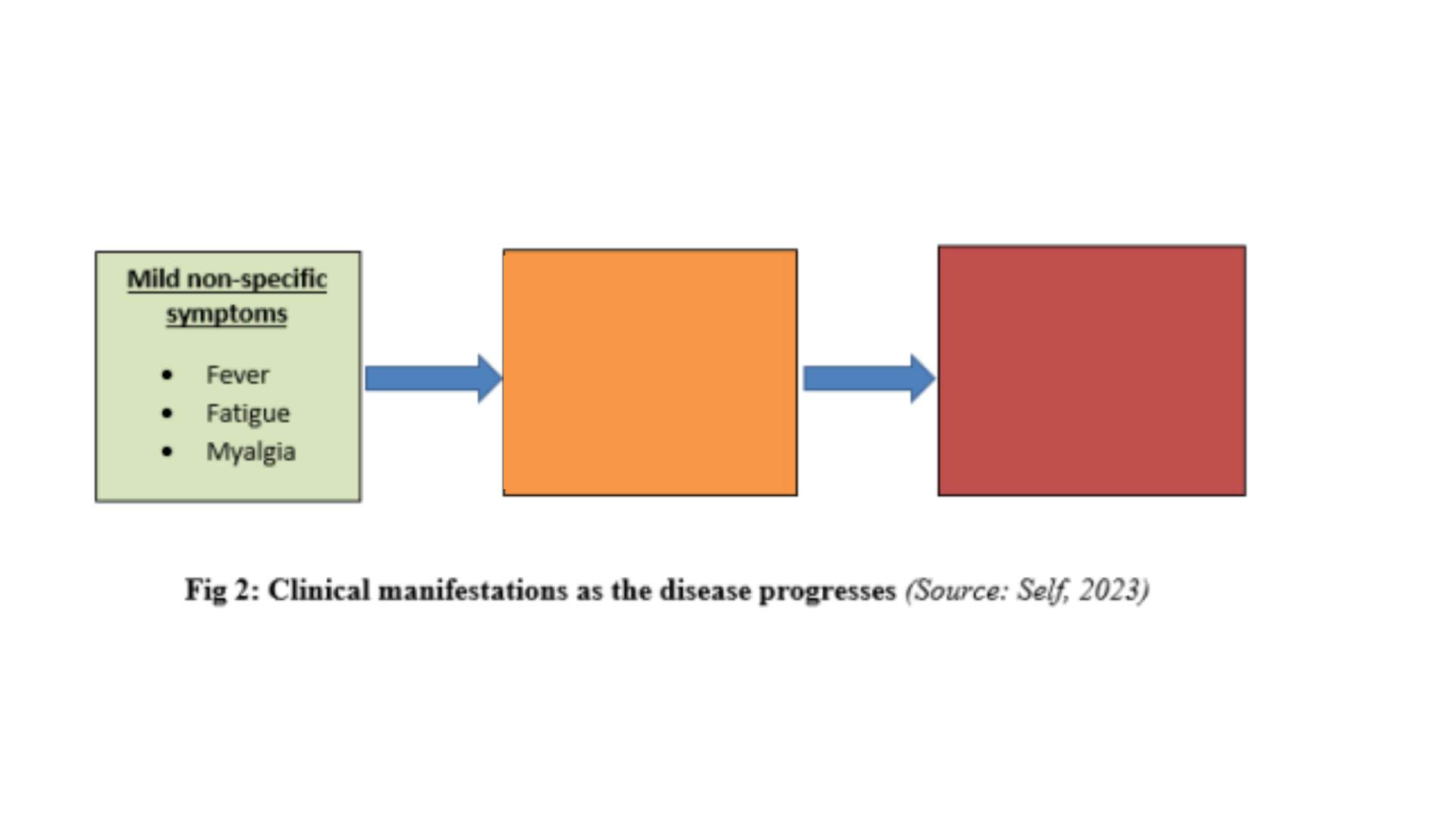MD7006: Literature Review Assignment Help

Question
MD7006: This is a University of Chester assignment for the Clinical Immunology and Microbial Pathology course, where a literature review needs to be presented by the student for a specific human disease. The student can choose either an infectious disease or an immunological disease for the literature review. This would require the student to thoroughly assess peer-reviewed articles for the same.
Solution
In providing Clinical Immunology and Microbial Pathology Assignment Help, our experts have written a comprehensive literature review on the Ebola Virus Disease. As per the assessment file, literature from original/research papers is utilized by our experts to develop a comprehensive literature review.
The solution is divided into the following sections:
Abstract
First, a brief abstract has been provided which presents a thorough summary of all the important findings from the literature review. We have provided a snippet of the complete abstract here.
The literature review critically evaluates the management of Ebola Virus Disease (EVD). In the review, primary research data from peer-reviewed journals was compared and contrasted to analyze the epidemiology of the disease which suggested that the disease is endemic to Africa. The review next inspected the virulence and immunological response of the virus to conclude that several mutations in the viral genome aids in the pathogenicity of the virus which triggers release of inflammatory responses in the body.
If you are looking to buy Clinical Immunology and Microbial Pathology Assignment Help, Call us at +61 871501720 today.
Introduction
A brief foregrounding of the disease has been provided in this introductory section to orient the reader to the purpose of doing this literature review.
EVD is a zoonotic and fatal primate disease that has caused large outbreaks over the decades (Rojas et al, 2023). Several outbreaks in African countries have been reported with 2014-2016 West African outbreak recorded as the most complex, with a heavy death count. Ebola has a fatality rate of 25% to 90% in the past outbreaks (WHO, 2023). The disease is caused by Ebola virus (EBOV) that is a part of the Filoviridae family. This family has 12 distinct virus, 7 out of which have been found to infect humans.
Order University of Chester Assignment Help and get flat 15% off. Reach out to us at onlineassignmentservices1@gmail.com.
Discussion
For the following section, our experts have done an extensive evaluation of the relevant, credible literature sources related to the EVD virus, based on which the following themes have been generated. You can read some parts of this review below:
Epidemiological significance
The first cases of EVD were detected in 1976 in Sudan and Zaire (WHO, 2023). Since then, the disease has been reported to be endemic to West and Equatorial Africa (Malvy et al, 2019). Some other countries like United States, Thailand, United Kingdom, Canada and Spain have reported a few cases of the disease which are possibly due to persons who migrated to the area with the disease. According to the studies, the temperature at near equator regions support the survival of the virus throughout the year (Liu et al, 2015).
Are you pursuing an MSc in Oncology and need assignment Help for this LR? You are at the right place! WhatsApp us at +447700174710 today!
Virulence and immunological response
EBOV is a non-segmented RNA virus with approximately 19 kb genome size. The virus has a uniform diameter of 80 nm but varies greatly in length, with filamentous form found most commonly. The virus has been observed to trigger the expression of several inflammatory mediators which results in an immunological imbalance thus aiding in disease progression (Baseler et al., 2017). EBOV viral protein (VP) 35 and VP24 present in the viral core are inhibitors of interferon production and signaling. VP 35 functions as a type 1 interferon antagonist while VP24 interferes with type 1 interferon signaling. The reactive oxygen and nitrogen species produced by the virus plays an important role in Ebola hemorrhagic fever (Singh et al, 2015).

Get Oncology Literature Review Help in UK from the best subject matter experts in the industry. Give us a call at +61 871501720.

Clinical symptoms and associated complications
Bah et al. (2015) performed a retrospective, observational study with confirmed EVD patients in Conakry, Guinea to analyze the clinical presentation of the disease. The study reported that the patients presented with non-specific clinical features like fever, fatigue, gastrointestinal symptoms, vomiting and headache. The results further stated that dehydration was the most common symptom recorded in the disease. Findings also reported severe prerenal kidney dysfunction in some cases. Anemia with gastrointestinal bleeding was also observed in some cases. A key strength of the study is that a comprehensive analysis was performed with the use of epidemiological data, medical and exposure history. The study is limited due to a small sample size which leads to the possibility of selection bias (Marshall et al, 2013). To further relate the clinical presentation of the disease with patient outcome, Hunt et al. (2015) performed a cohort study of patients with Ebola in Sierra Leone. Unlike Bah et al (2015) which studied all the symptoms of the cohort, Hunt et al. (2015) study divided the patients on the basis of symptoms into three stages with Stage 1 patients presenting mild, non-specific symptoms; Stage 2 patients having gastrointestinal involvement; and Stage 3 patients with complicated symptoms. In support of the Bah et al. (2015) study, Hunt et al. (2015) study findings reported that 50% of the cases had acute kidney injury which was not restricted to the late-stage disease. The study hypothesized that the renal injury could be a result of profound hypovolemia caused by gastrointestinal losses. The study also observed that a higher viral load and acute kidney injury were risk factors for the disease mortality.

We offer scholarly Literature Review Assignment Help in England at cheap prices! Reach out to us at onlineassignmentservices1@gmail.com to learn more about our exciting offers.
Diagnosis, treatment and prevention
Laboratory testing of the Ebola virus through viral cultures have been the most commonly used technique for diagnosis in the disease outbreak. Usual diagnosis by quantitative reverse transcription-polymerase chain reaction (qRT-PCR) takes up to 5 days during which there are chances of disease progression. Hence, the use of safe and quick diagnostic techniques for the viral infection is crucial for disease treatment especially in resource poor conditions (Broadhurst et al, 2016). To remedy this, Boisen et al. (2016) performed a study for the field validation of ReEBOV Point-of-Care (POC) diagnosis. The study was of clinical design that collected samples of confirmed patients with Ebola in a blind field trial to check the clinical efficacy of the test. The study reported a positive percentage agreement of 91.1% and a negative percentage agreement of 90.2%. The study concluded that the results demonstrated the potential of ReEBOV RDT to provide clinically appropriate and rapid POC tests. A key strength of the study is that the results produced were also replicated in an independent study conducted by the World Health Organization, further validating the test results. A major limitation in the study is that it is a preliminary study which needs further investigation to be approved for the future application.
If you are a University of Chester student pursuing MSc Oncology and need assignment Help for your assignments, you are at the right place! WhatsApp us at +447700174710.
Emerging Therapies
Here, our experts have remarked upon the different contemporary therapies available with respect to the EBOLA virus. In providing University of Chester Assignment Help, our experts conduct an in-depth search for relevant and credible literature review articles to write an evidence-based essay.
As stated by Uyeki et al (2018) study, supportive care in the initial stages of the disease can help in decreasing the mortality rate from Ebola virus infections. But in case of severe complications like renal failures, other emerging treatments are being explored. Mulangu et al. (2019) conducted a randomized controlled trial of four investigational therapies for Ebola. In the study, all patients were given standard care in addition to random treatment of either of the four therapies i.e., Remdesivir, Mab114, REGN-EB3 and ZMapp (control group). The study results reported the superiority of Mab114 and REGN-EB3 therapy to Remdesivir and ZMapp in reducing the mortality in the disease. The findings reported that the mortality rate in Mab114 group was 35.1%, 49.7% in ZMapp group and 33.5% in REGN-EB3 group. A key strength of the study is that it is a scientifically crucial and ethically approved research which was conducted during an Ebola outbreak
Do you like the answers written by our experts? Approach OAS and book MD7006 Literature Review Assignment Help at flat 30% off! Give us a call at +61 871501720.
Conclusion
Lastly, all the findings from the literature review have been summarised through a brief concluding paragraph.
EVD is a deadly disease that is largely endemic to Africa due to a favorable climate that aids in the survival of virus. Caused by the members of Ebolavirus genus, the disease is spread by non-aerosol direct contact. Several mutations in the viral genome triggers immunological response like release of inflammatory mediators that leads to the pathophysiology seen in the disease.
Are you also looking to buy Clinical Immunology and Microbial Pathology Assignment Help? Wait no more! Mail us at onlineassignmentservices1@gmail.com now.

